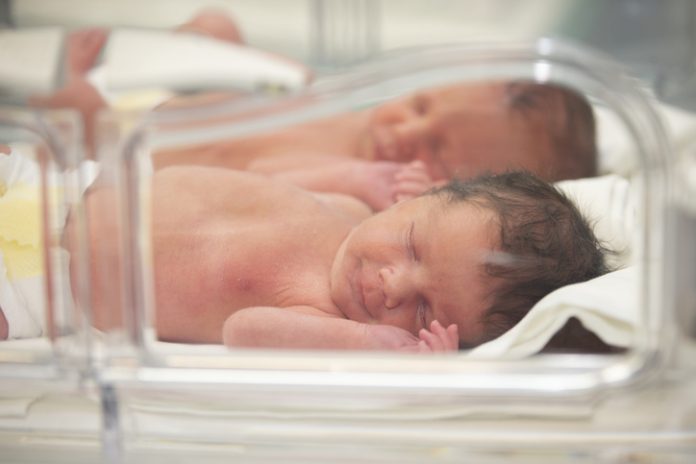Rural hospitals are shuttering their maternity wards, The Wall Street Journal reports.
By the end of the year, hospitals in Ashland, Ohio; Baker City, Oregon; Troy, New York; and Pontiac, Illinois will no longer deliver babies, says the newspaper. The hospitals are part of a trend throughout the country of small or older communities with no access to maternity care.
OSF HealthCare Saint James-John W. Albrecht Medical Center in Illinois delivered 120 babies last year, down from 184 in 2019, according to the Journal. While it provides OB/GYN services, it is now routing labor and delivery patients to another hospital.
In a statement, OSF HealthCare said, “Many hospitals and health care systems, especially in rural areas, are struggling to care for expectant mothers right now. This is due to several factors, including physician shortages, staffing challenges, regulatory requirements, and financial hardships.”
The dangers of closing maternity units include risks to infant health and increases in maternal death rates.
Medicaid Pays Poorly
There are several reasons rural maternity wards are struggling to stay afloat and Medicaid’s poor payment rates is one of them, says Gary Alexander, director of the Medicaid and Health Safety Net Reform Initiative at the Paragon Health Institute.
“Medicaid doesn’t pay adequately,” said Alexander. “Even though Medicaid is the largest payer—let’s say typically 50 percent [of revenue for rural hospitals]—add to that fact that Medicaid is often the lowest payer.”
Medicaid might increase access to rural patients, but its reimbursement rates are only one-third to one-half of what private health insurers pay and often do not cover a hospital’s costs.
Financial Motives Not Health
Data from the Kaiser Family Foundation (KFF) indicating Medicaid expansion helps rural hospitals is not compelling, says Alexander.
“Even in the expansion states, rural hospitals are struggling,” said Alexander. “Medicaid is not adequate. It’s not an adequate funder; it’s not a fixer for government. States need to be incentivized to do more free-market solutions for health care and to come up with different models.”
Alexander says politicians want to expand Medicaid because of perceived general economic benefits, not necessarily because of the health benefits.
“Governors will say that Medicaid is a stimulus,” said Alexander. “They don’t want to cut Medicaid because they feel it’s free federal money; the feds are paying most of the tab.”
Safety Net Jeopardized
Medicaid is no longer the program it was intended to be, suffering from mission creep as politicians try to use it to solve access to housing, food insecurity, and climate change, says Alexander.
“Medicaid has a place as a safety net for very targeted smaller population—the populations as defined in the original law,” said Alexander.
The program originally targeted the intellectually disabled, poor, elderly, and pregnant women.
“It absolutely has a place, and it should be a payer, but it shouldn’t be 50 percent or 75 percent,” said Alexander.
Rural Population Declining
Rural hospital maternity wards closing down is part of the larger problem of hospitals closing down in rural areas, says Devon Herrick, a health economist and advisor to The Heartland Institute, which publishes Health Care News.
“As rural hospitals struggle financially, they begin to cut those services that are not profitable,” said Herrick.
One problem for rural areas is lower demand for maternity services, says Herrick.
“What makes maternity wards unprofitable is partly the depopulation of rural areas,” said Herrick. “Rural residents tend to be older, as younger people leave for jobs in the city. Demand for maternity wards is not as great as in years past.”
Country people are also less affluent, says Herrick.
“Rural residents tend to be poorer than residents in metropolitan areas,” said Herrick. “Lower income people may have no insurance coverage or Medicaid coverage.”
Business Models Outdated
Alexander also sees other problems inherent to rural hospitals.
“For the most part they’re a legacy system,” said Alexander. “They’ve been around for a long time, and a lot of them really haven’t looked at changing or altering their business model.”
Hospitals in rural areas have fewer patients, says Alexander.
“So, there are fewer cases to spread fixed costs, and there’s a minimum of specialty staff and equipment that must be there, whether or not it’s optimally used or not,” said Alexander.
Less Experience, Higher Risk
Rural hospitals also offer their employees lower salaries with fewer opportunities for job advancement and have lower visibility than urban hospitals, making it harder to hire high-quality doctors, says Alexander.
“Rural obstetricians don’t often have the broadest experience with challenging cases,” said Alexander.
The potential for lawsuits could also be a factor, says Herrick.
“Because babies are young and sympathetic patients, there is also significant malpractice liability to delivering babies,” said Herrick. “Doctors not specifically trained in OB/GYN may not want to be the county obstetrician like was common decades ago.”
Saving Rural Hospitals
Alexander’s proposed solutions include more surgery centers, specialty care, short-term facilities, rehabilitation centers, and telemedicine.
“Rural hospitals are important; however, I think that government’s role should be allowing them to have new business models,” said Alexander. “Sometimes you have winners and losers in that, like in any industry. It’s still going to be a struggle for rural hospitals to exist. I think the only way really around it is we have to incentivize these hospitals to start to look at different models.”
Each state is different, and hospitals need to be assessed individually, but the government could provide the right environment for success, says Alexander.
“The state needs to create that atmosphere or that incentive so that they don’t just continue to operate the same model and then go out of business,” said Alexander.
Herrick says states could take an innovative step by encouraging midwifery.
“One thing state and local governments can do is free midwives and nurse midwives to practice in small towns,” said Herrick. “For that matter, states could even train nurse midwives to specifically work in areas lacking maternity services.”
Harry Painter (harry@harrypainter.com) writes from Oklahoma.




















